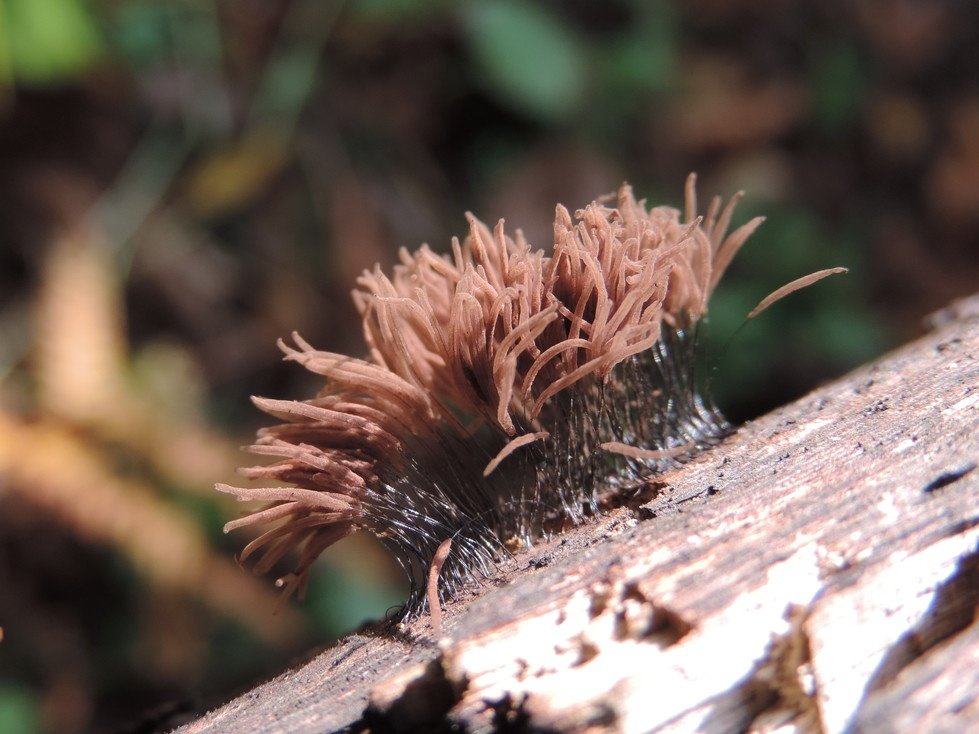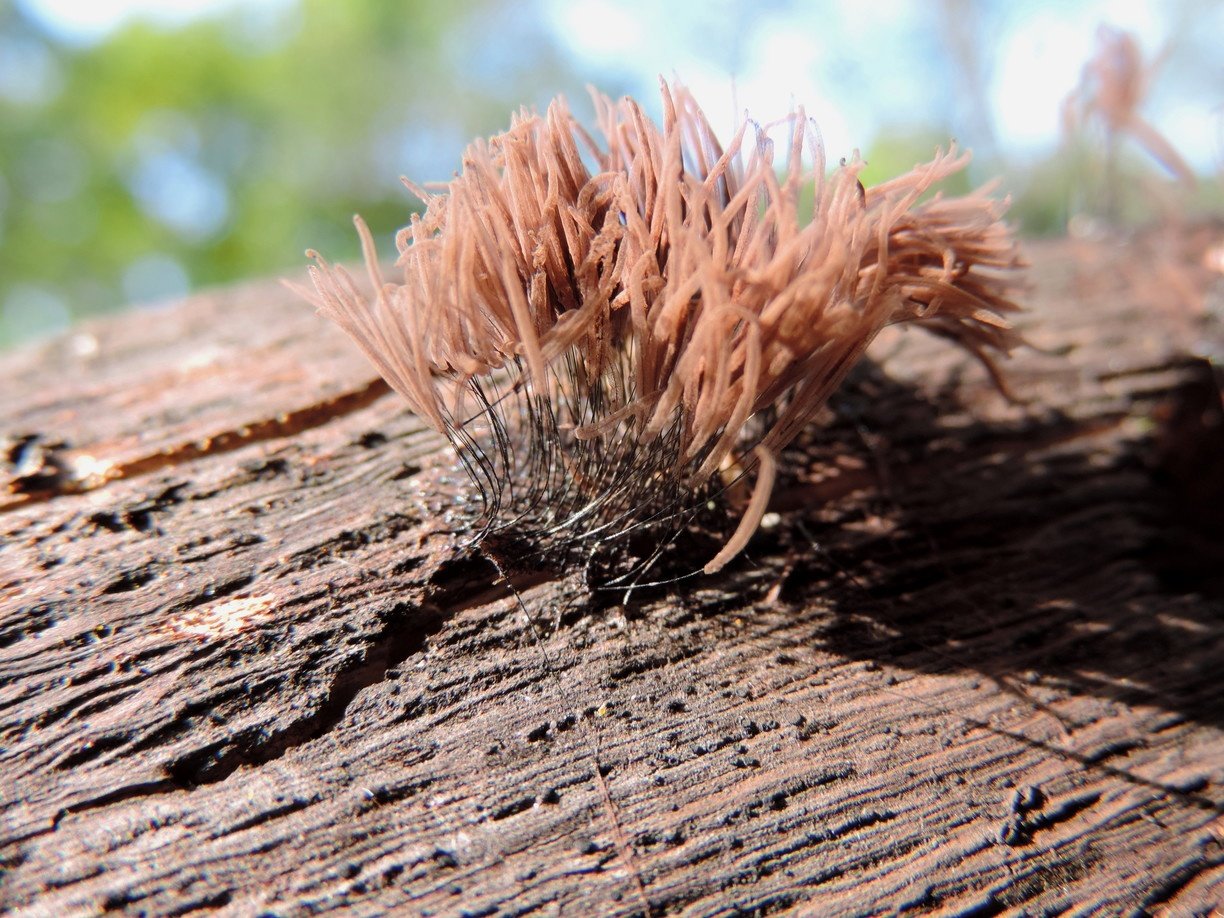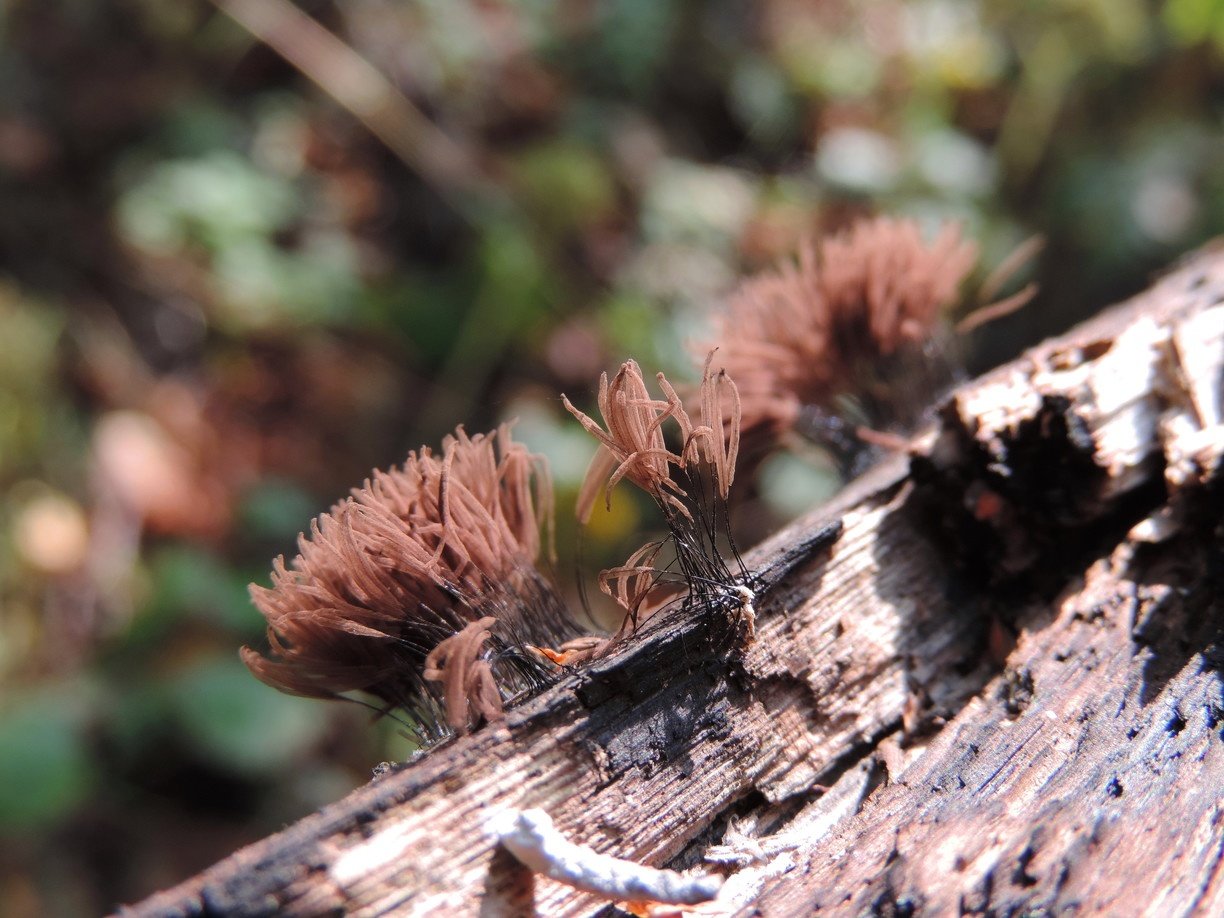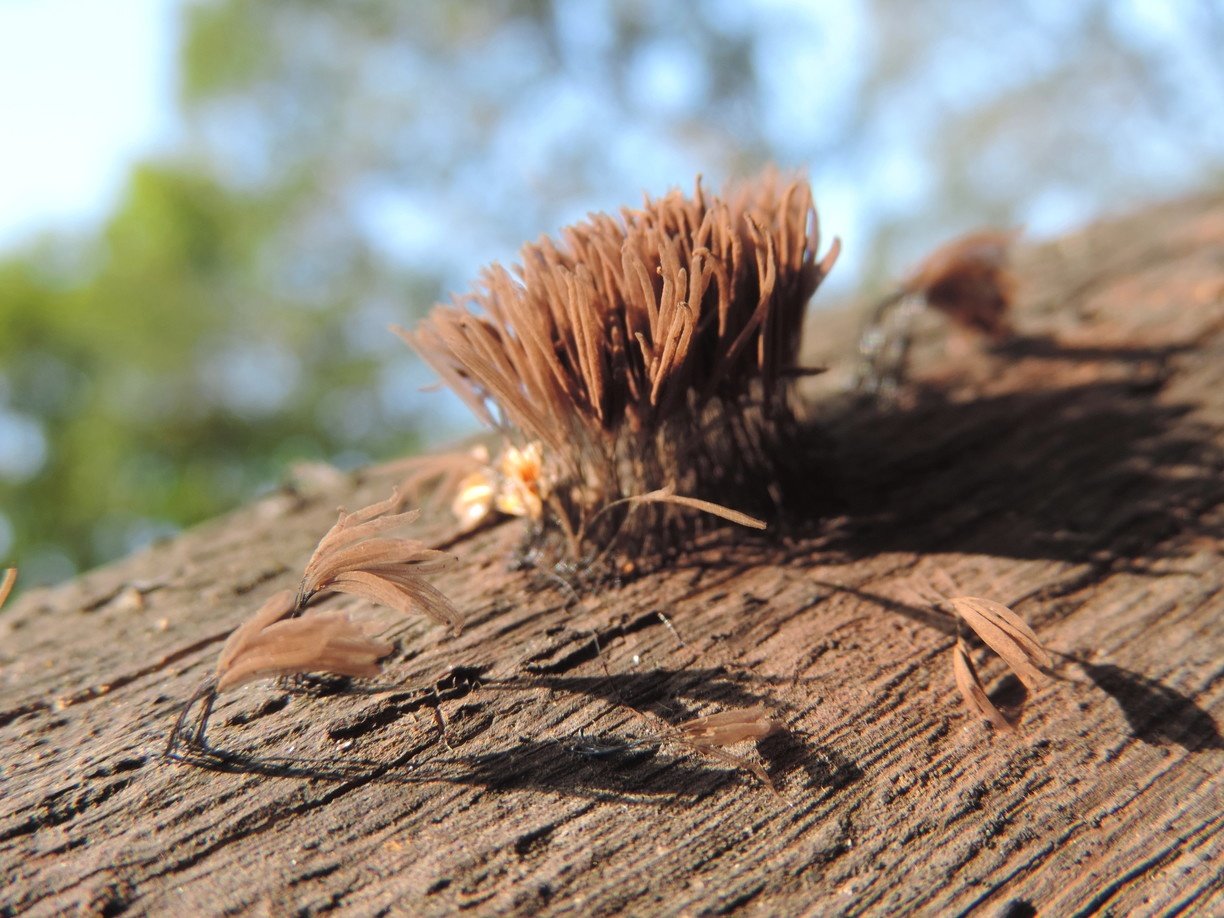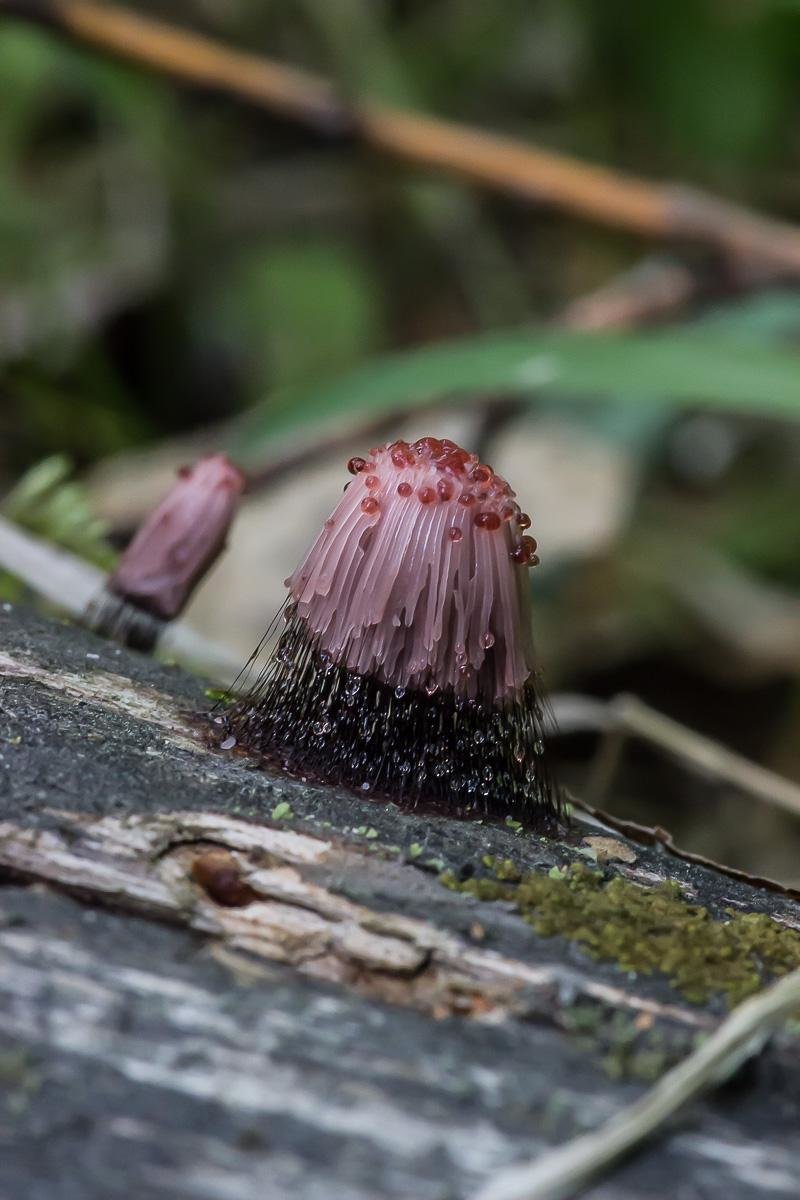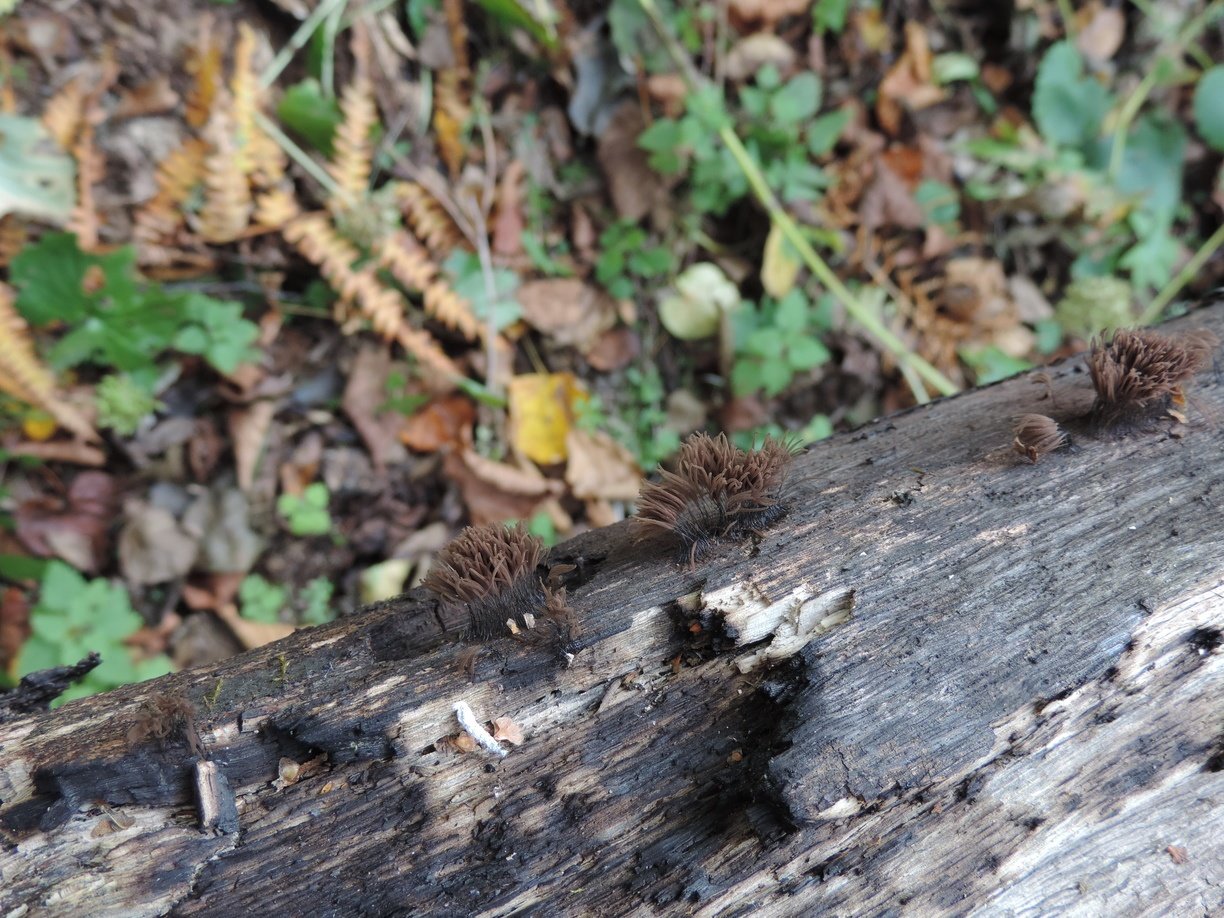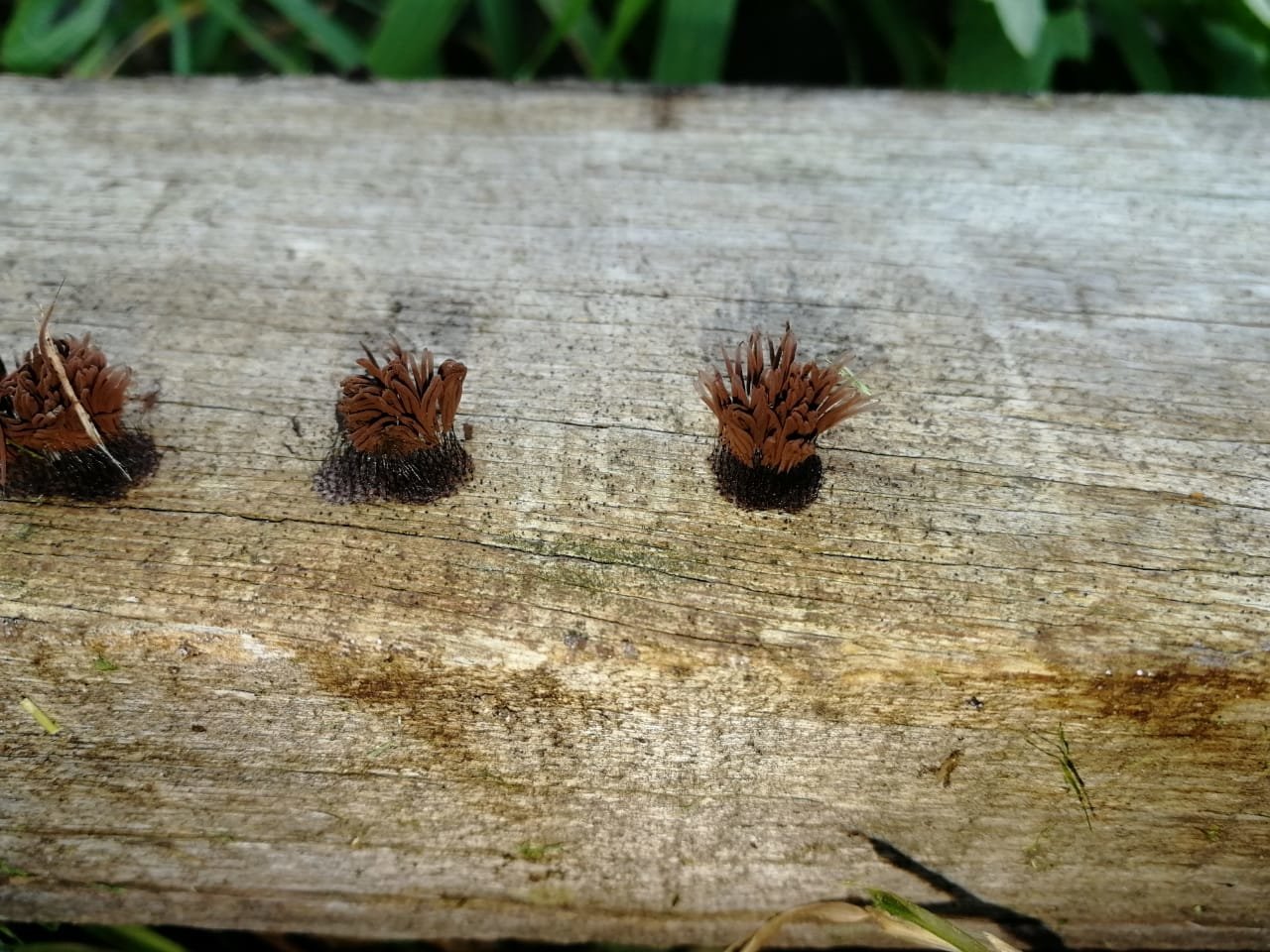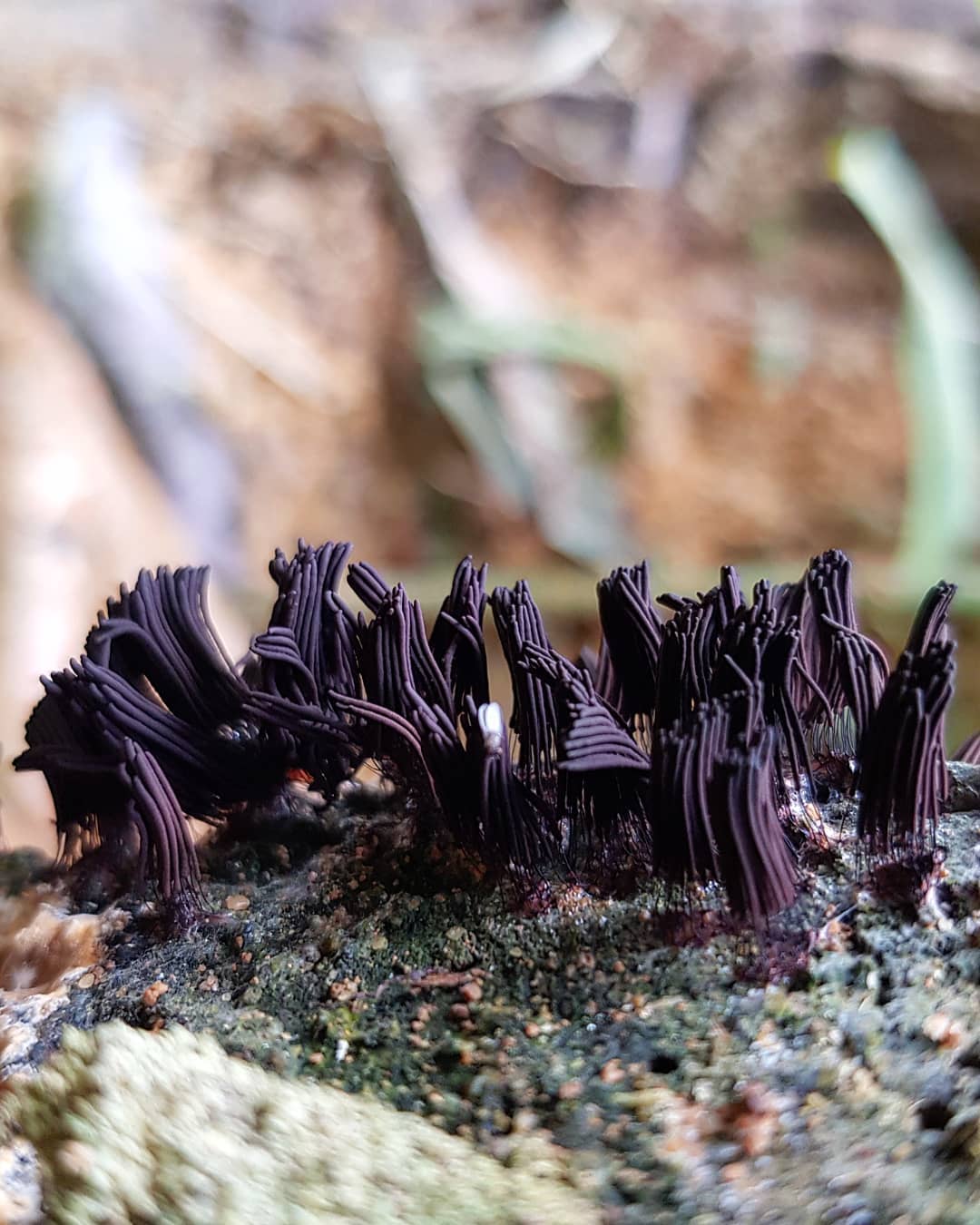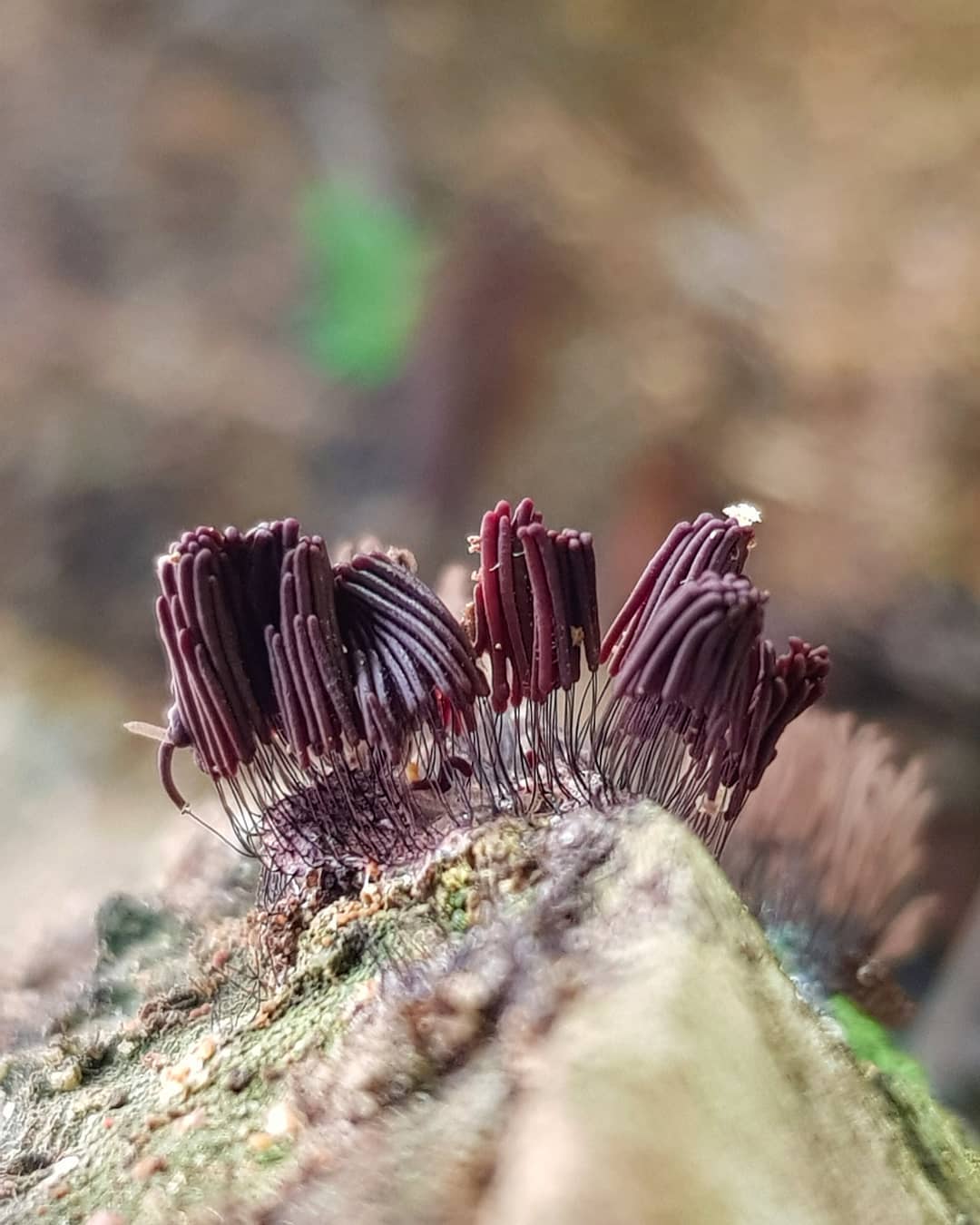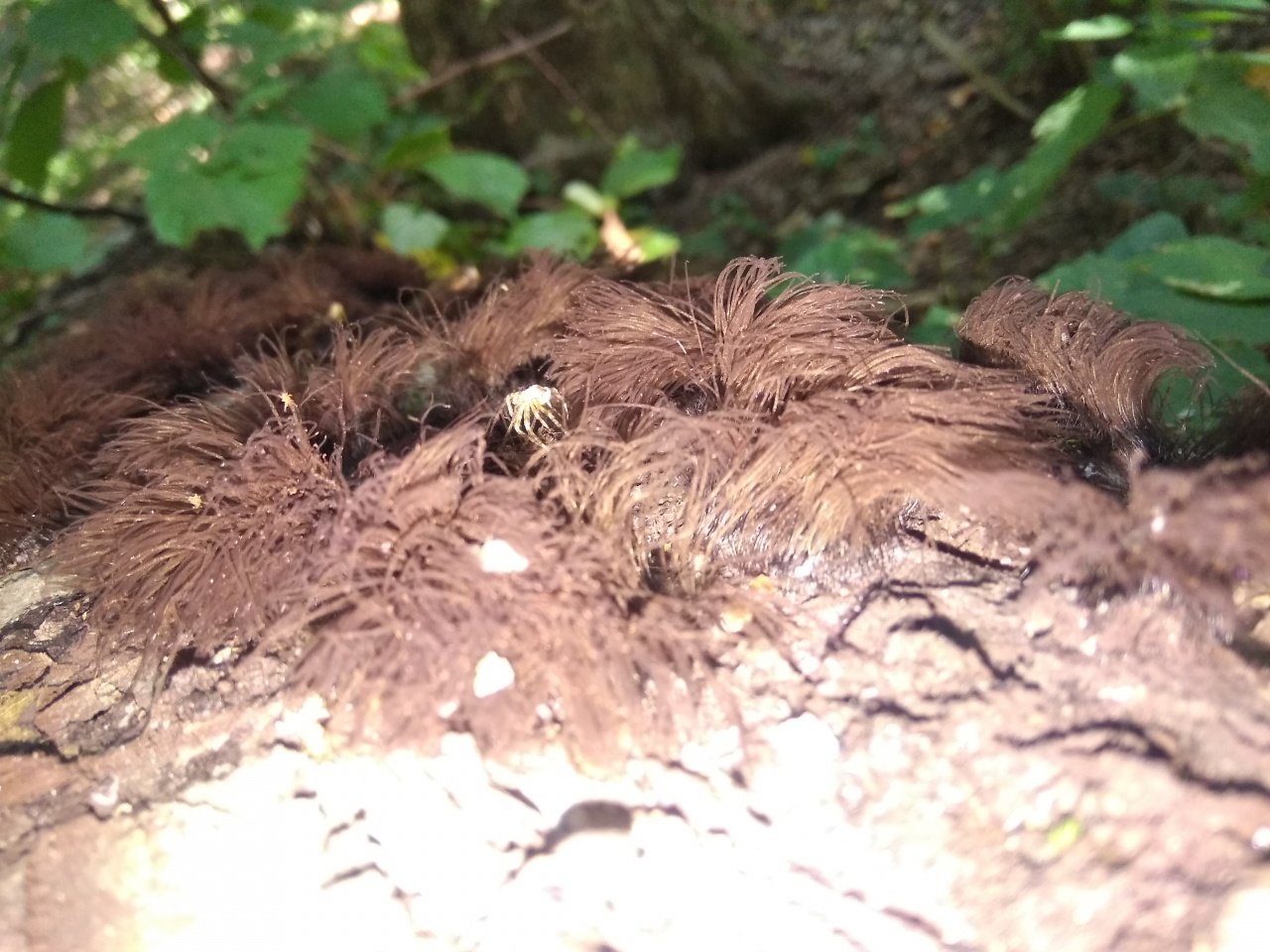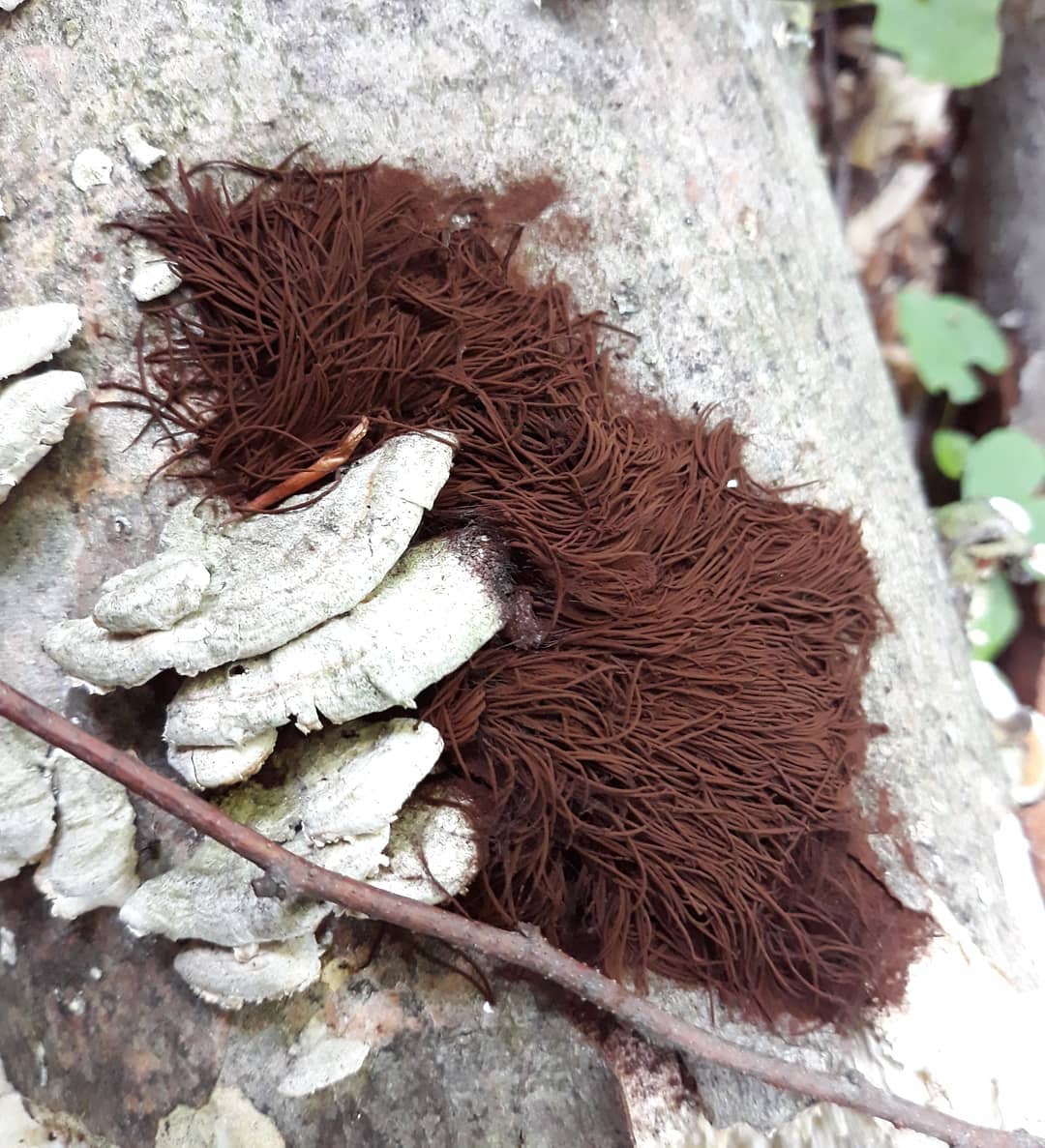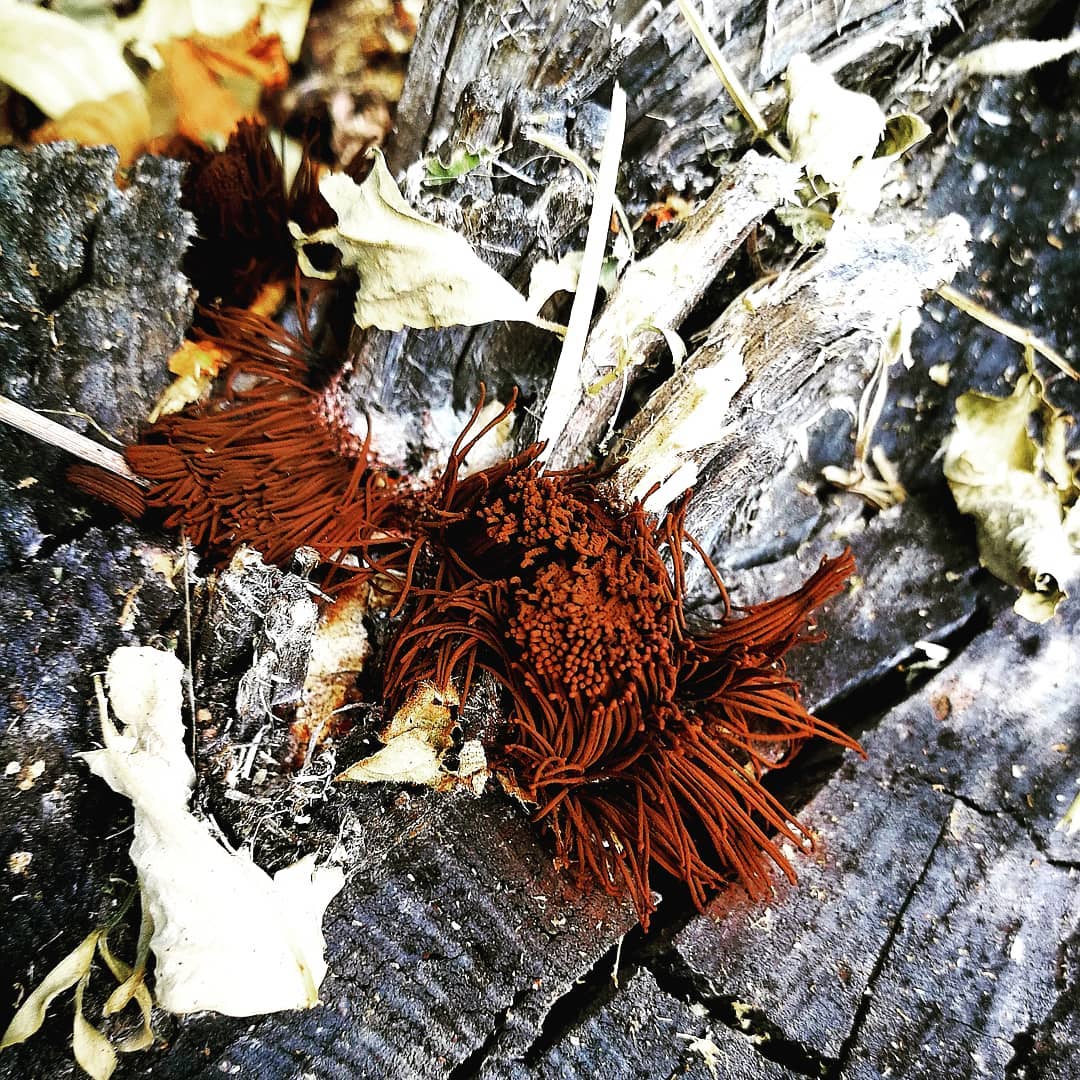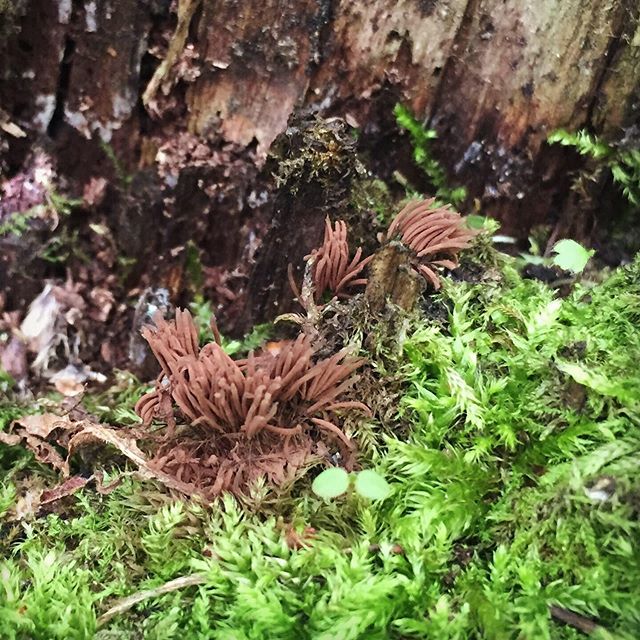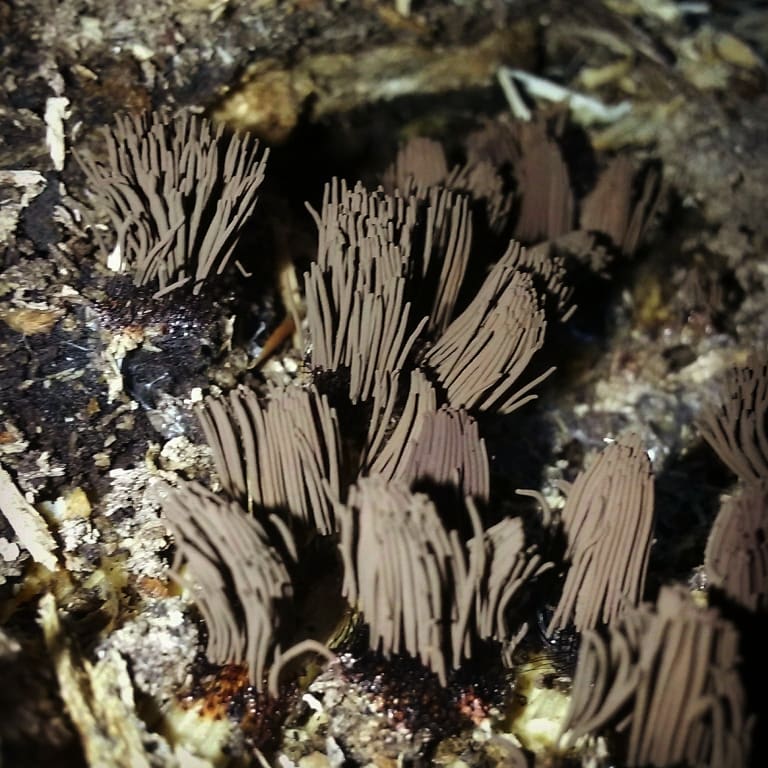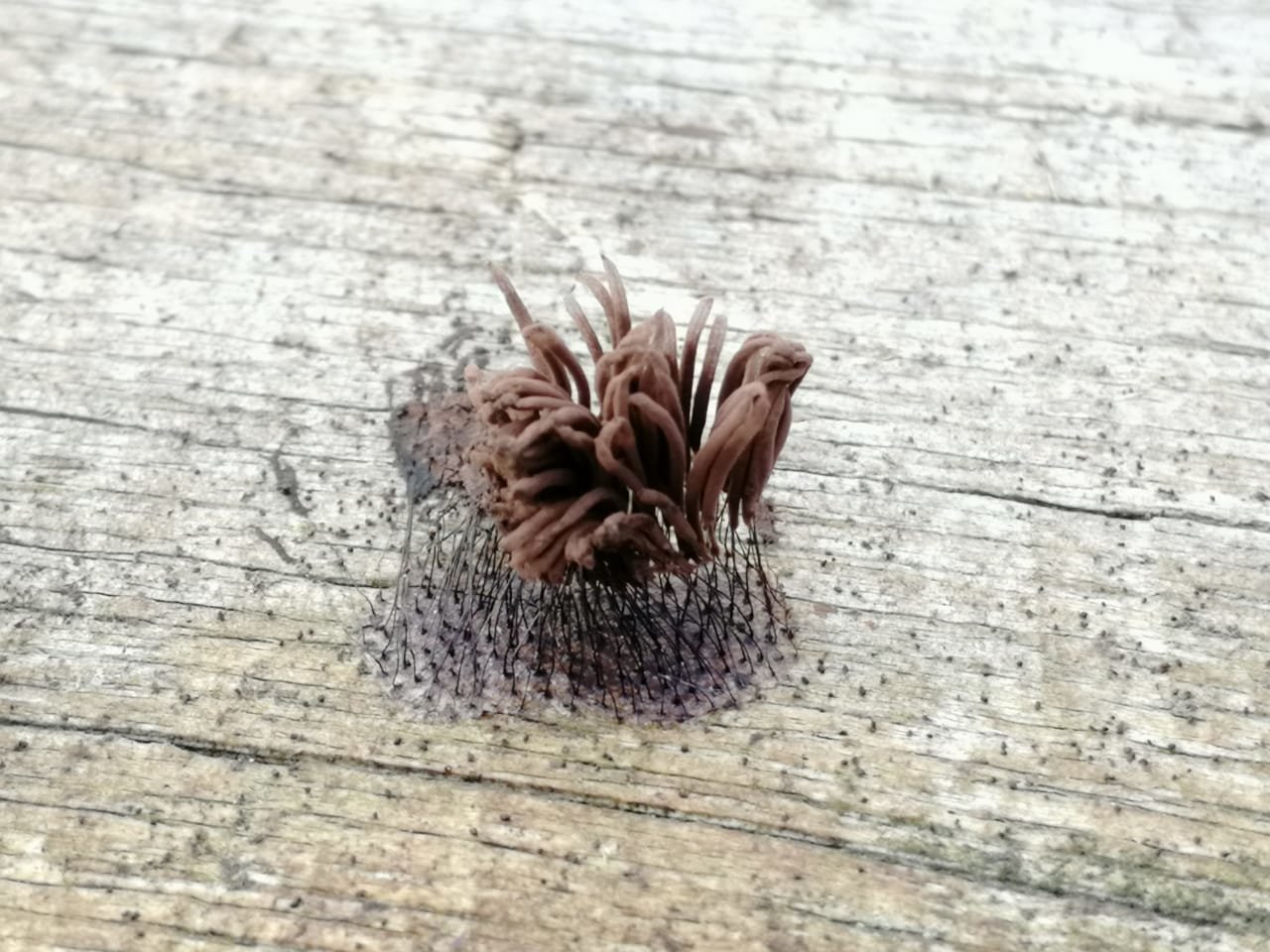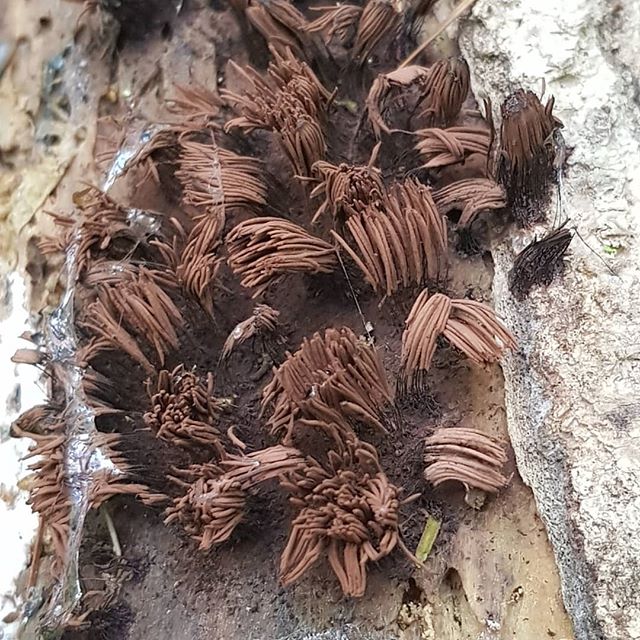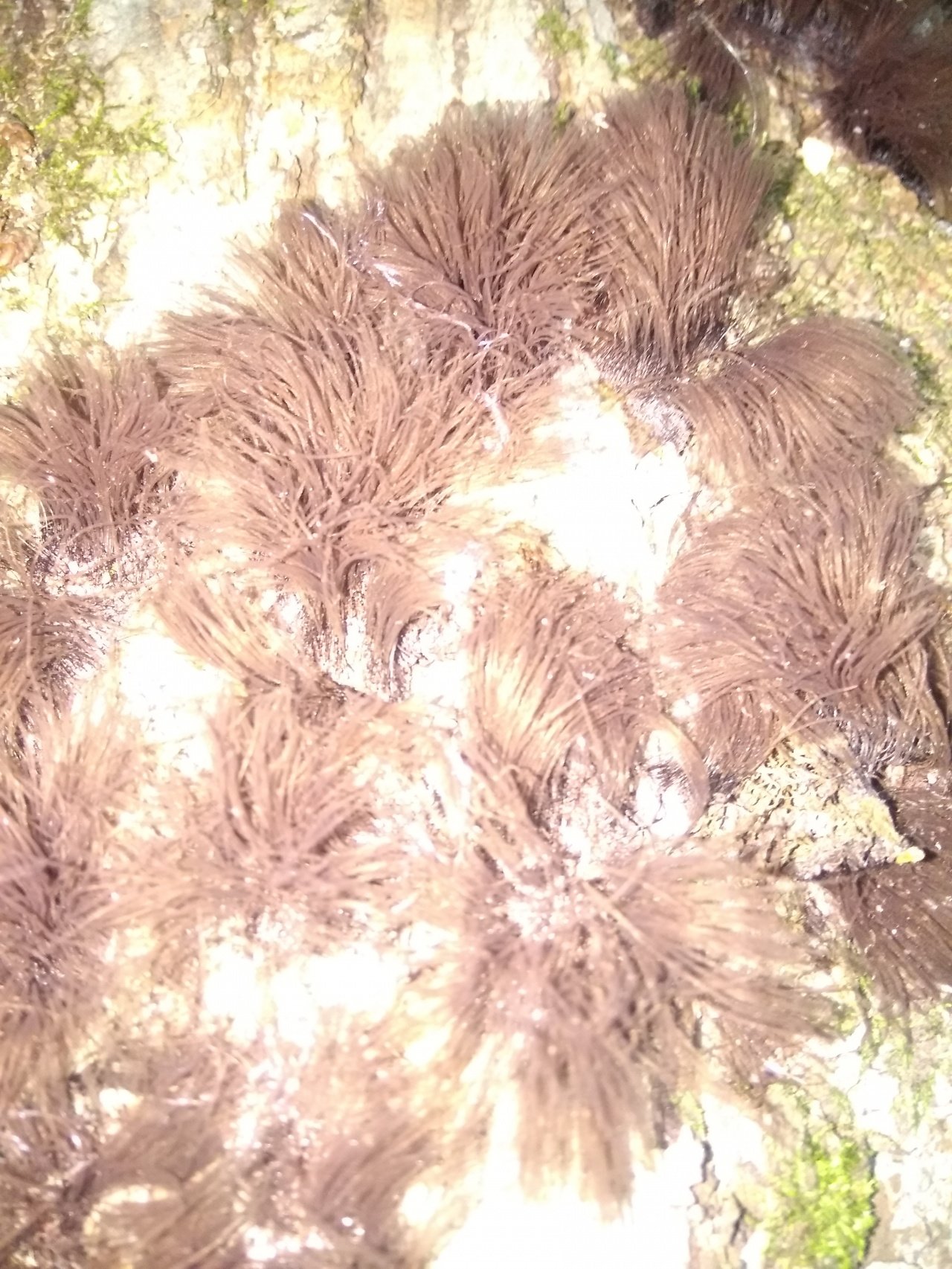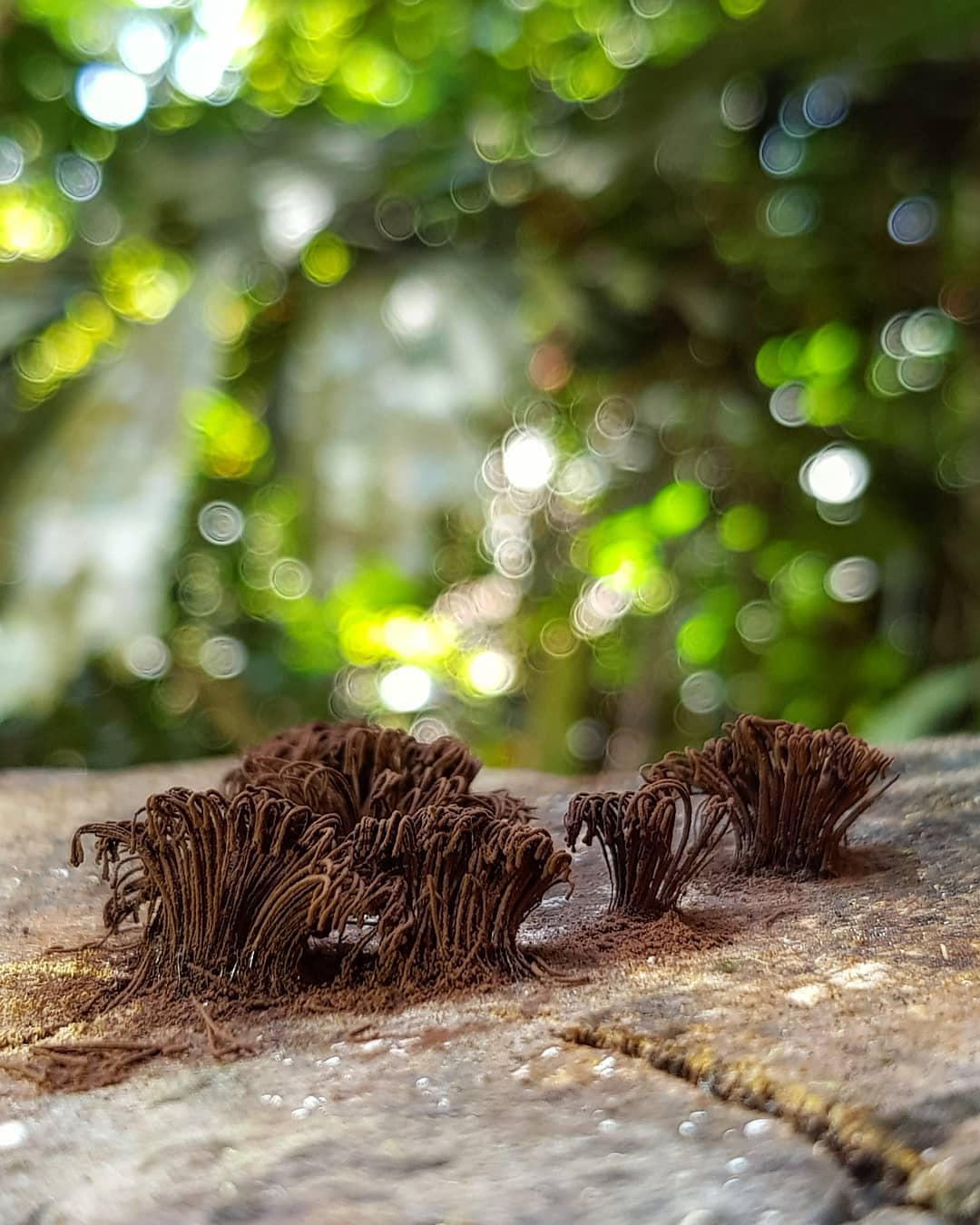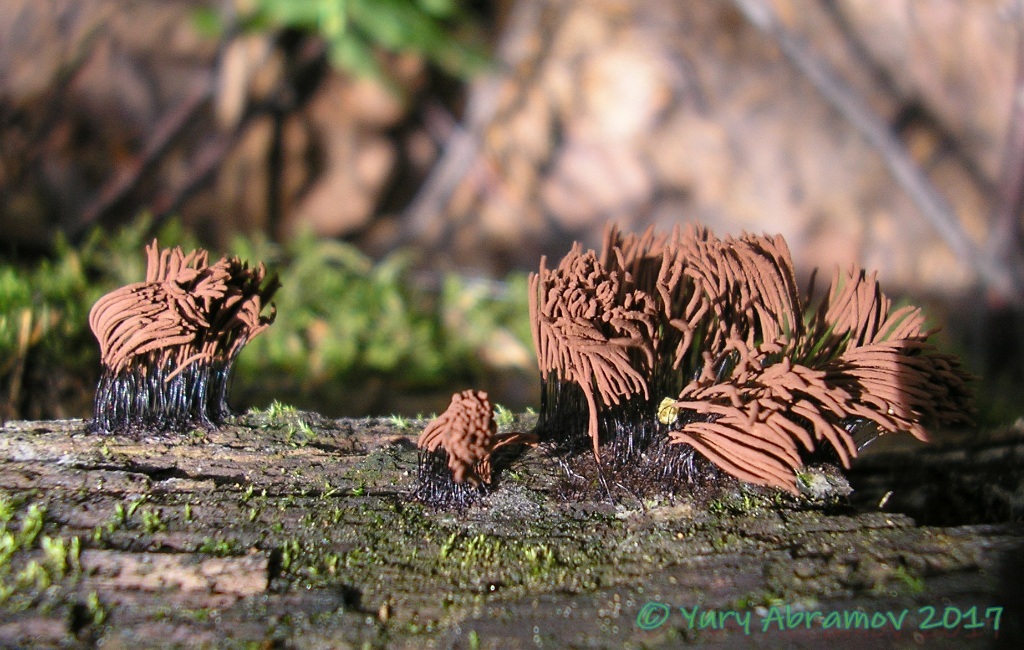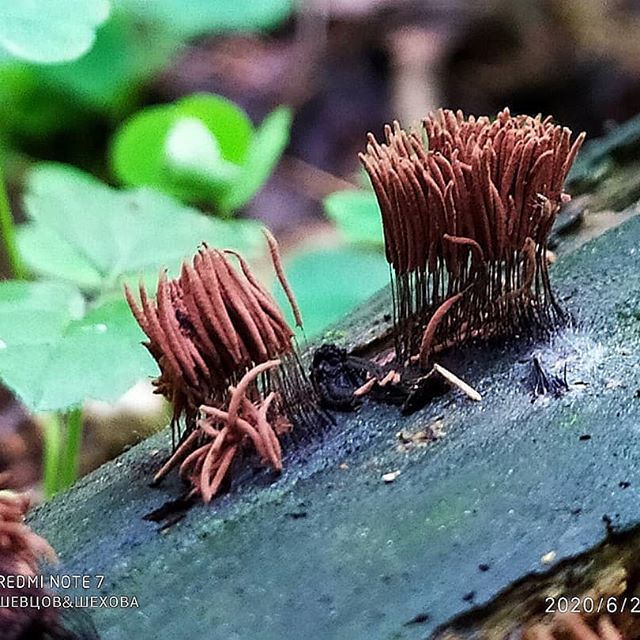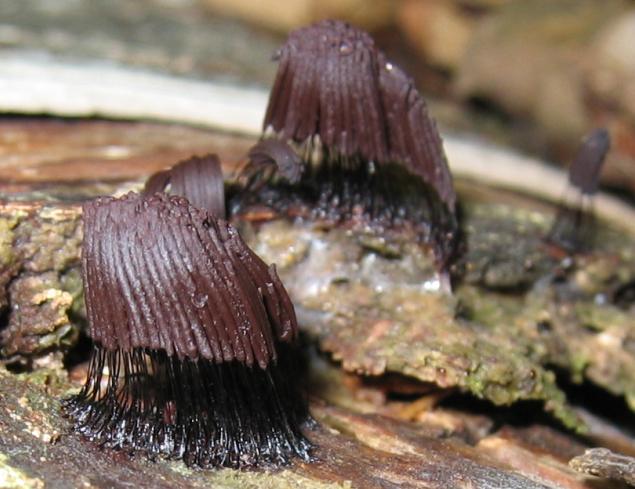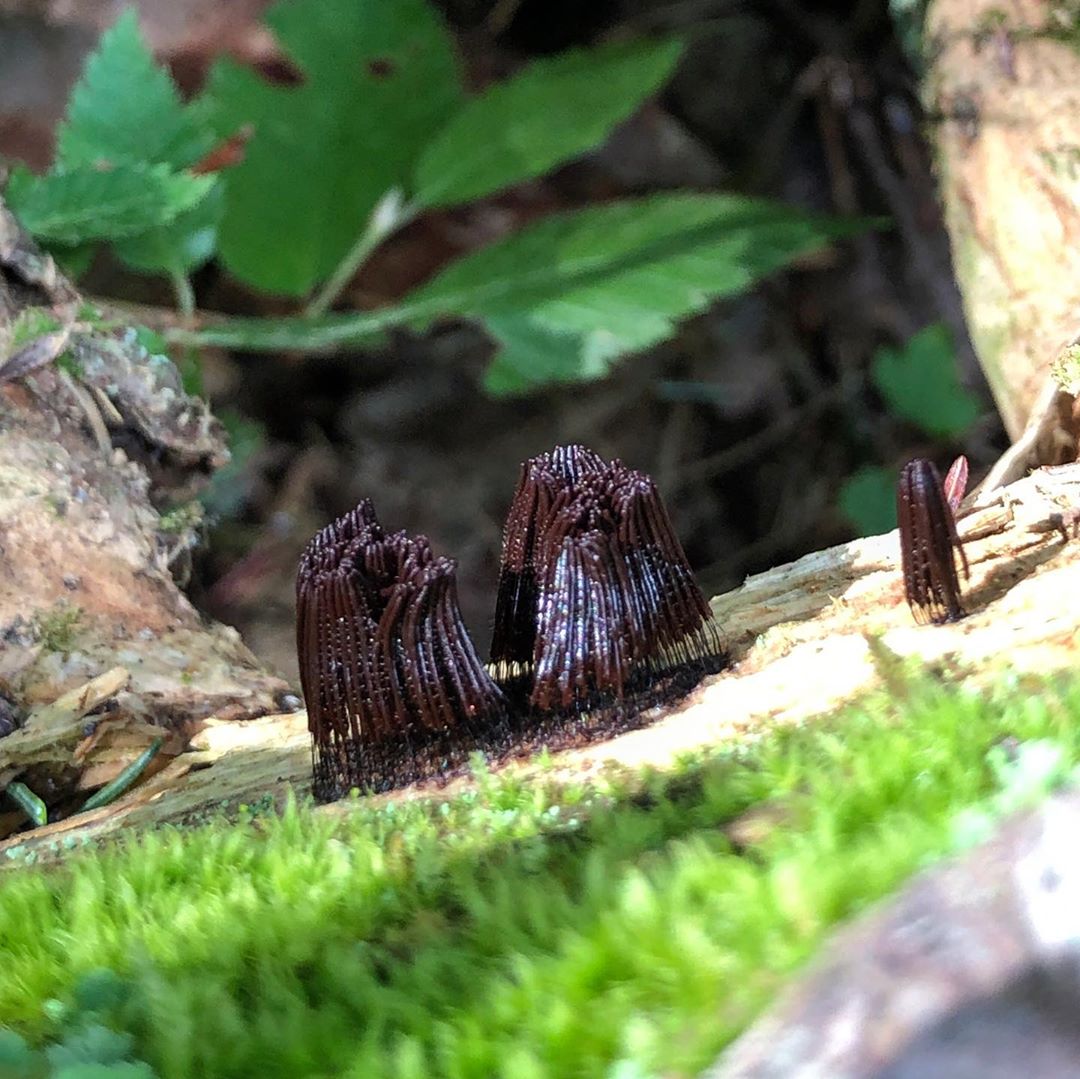Red Book
Are you here:
Home - The Red Book of the Leningrad Region. Plants - Stemonitis magnificent
Stemonitis is magnificent
Stemonitis splendens Rostaf. (Myxomycota. Stemonitaceae) Status. 3 (R). Rare view.
Short description. Slime mold forming large, usually erect or slightly drooping filamentous sporangia. Sporangia, crowded into dense, extensive colonies, sometimes sticking to each other; on legs, cylindrical, obtuse or pointed at the end, dark brown, purple-brown, black, (5) 715 (25) mm h. Hypothallus membranous, silvery, brown, purple. The peridium disappears after the maturation of the sporangium. Stem black or dark brown, shiny, widened at the base, 1-4 mm long. The column reaches almost the end of the sporangium, subulate, sometimes curved or twisted at the end. The capillium consists of a small number of warp threads (sometimes with extensions) extending from the column and forming
rather thick threads with cells of 30-100 microns in diameter; cells may be absent at the contact points of stuck together sporangia. Spores 7-9 microns in diameter., Warty, solitary yellowish, lilac-brown, dark brown or black in mass.
Spreading. Found in env. the village of Kemka (Luga district) (1). In Russia, it was also recorded in the Polar Urals, the North Caucasus and the Far East (1).
Ecology and biology. Inhabits mainly large fallen trees of deciduous trees. In the Leningrad region. found in a spruce forest on a large mossy spruce log.
Limiting factors. Not studied.
Security measures. Found in the proposed Kemka River Basin Wildlife Refuge. It is necessary to control the state of the known population and search for new locations.
Sources of information: 1 Novozhilov. 1999. Yu. K. Novozhilov
Status. 3 (R). Rare.
Description. Slime mold forming large, usually erect or slightly pendent filiform sporangia. Sporangia clustered in vast compact colonies, sometimes sticking together; stalked, cylindrical, obtuse or acute at the apex, dark brown, purplish brown, black, (5) 7-15 (25) mm high. Hypothallus membranous, silvery, brown, magenta. Peridium evanescent after maturing of the sporangium. Stalk black or dark brown, shiny, thickened at the base. 1-4 mm long. Columella almost reaching the apex of sporangium, tubulate, sometimes curved or twisted at the end. Capillitium 30-100 | im in diam., Of small number of main threads (sometimes with expansions). emerging from colony and forming a reticulum of smooth. rather thick threads with meshes 30-100 pm in diam. on the periphery of sporangium; meshes can be absent from points of contact of adhaering sporangia. Spores 7-9 pm in diam., Warty, single, yellowish, lilac brown, in mass dark brown or black.
Distribution. In the Leningrad region found in the vicinity of Kemka (Luga district) (1). In Russia also recorded from the Polar Urals, Nonhem Caucasus and the Far East (1).
Ecology and biology. Predominantly on fallen trunks of deciduous trees. Found in spruce forest, on a large spruce log covered by mosses.
Limiting factors. Not studied.
Conservation measures. Occurs in The River Kemka Basin proposed sanctuary. Monitoring of the population and a search for new localities required.
Sources of information: I. Novozhilov. 1999. Yu.K. Novozhilov
|
25.11.2018 14:09:48
-
Menu
- home
- Photo gallery
-
Animals
- Mammals
- Birds
- Fishes
- Amphibians
- Reptiles
- Insects
- Crustaceans
- Worms
- Molluscs
-
Plants
- Angiosperms
- Gymnosperms
- Ferns
- Mosses
- Seaweed
- Lichens
- Mushrooms
- Moscow
-
Moscow region
- Mammals
- Birds
- Invertebrates
- Pisces, presm., Terrestrial.
- Plants
- Mushrooms, mosses, lichens
-
Voronezh region
- Plants
- Animals
-
Republic of Crimea
- Plants
- Animals
-
Rostov region
- Plants
- Animals
-
Krasnodar Territory
- Plants
- Animals
-
Leningrad region
- Plants
- Animals
-
Pskov region
- Plants
- Animals
-
Sverdlovsk region
- Plants
- Animals
-
Saratov region
- Mushrooms
- Bryophytes
- Ferns
- Amur region
- Krasnoyarsk Territory
- Belgorod region
-
Chelyabinsk region
- Plants
- Animals
-
IUCN Red List
- Extinct mammals
- Rare birds of the world
- Cetaceans
- Carnivores
- Reserves of Russia
- Wild animals
- Birds of Russia
- Download the Red Book
- Basic documents
- Custom sog.
- .
Stemonitis is magnificent
Short description. Slime mold forming large, usually erect or slightly drooping filamentous sporangia. Sporangia, crowded into dense, extensive colonies, sometimes sticking to each other; on legs, cylindrical, obtuse or pointed at the end, dark brown, purple-brown, black, (5) 715 (25) mm h. Hypothallus membranous, silvery, brown, purple. The peridium disappears after the maturation of the sporangium. Stem black or dark brown, shiny, widened at the base, 1-4 mm long. The column reaches almost the end of the sporangium, subulate, sometimes curved or twisted at the end.The capillium consists of a small number of warp threads (sometimes with extensions) extending from the column and forming
rather thick threads with cells of 30-100 microns in diameter; cells may be absent at the contact points of stuck together sporangia. Spores 7-9 microns in diameter., Warty, solitary yellowish, lilac-brown, dark brown or black in mass.
Spreading. Found in env. the village of Kemka (Luga district) (1). In Russia, it was also recorded in the Polar Urals, the North Caucasus and the Far East (1).
Ecology and biology. Inhabits mainly large fallen trees of deciduous trees. In the Leningrad region. found in a spruce forest on a large mossy spruce log.
Limiting factors. Not studied.
Security measures. Found in the proposed Kemka River Basin Wildlife Refuge. It is necessary to control the state of the known population and search for new locations.
Sources of information: 1 Novozhilov. 1999. Yu. K. Novozhilov
Status. 3 (R). Rare.
Description. Slime mold forming large, usually erect or slightly pendent filiform sporangia. Sporangia clustered in vast compact colonies, sometimes sticking together; stalked, cylindrical, obtuse or acute at the apex, dark brown, purplish brown, black, (5) 7-15 (25) mm high. Hypothallus membranous, silvery, brown, magenta. Peridium evanescent after maturing of the sporangium. Stalk black or dark brown, shiny, thickened at the base. 1-4 mm long. Columella almost reaching the apex of sporangium, tubulate, sometimes curved or twisted at the end. Capillitium 30-100 | im in diam., Of small number of main threads (sometimes with expansions). emerging from colony and forming a reticulum of smooth. rather thick threads with meshes 30-100 pm in diam. on the periphery of sporangium; meshes can be absent from points of contact of adhaering sporangia. Spores 7-9 pm in diam., Warty, single, yellowish, lilac brown, in mass dark brown or black.
Distribution. In the Leningrad region found in the vicinity of Kemka (Luga district) (1). In Russia also recorded from the Polar Urals, Nonhem Caucasus and the Far East (1).
Ecology and biology. Predominantly on fallen trunks of deciduous trees. Found in spruce forest, on a large spruce log covered by mosses.
Limiting factors. Not studied.
Conservation measures. Occurs in The River Kemka Basin proposed sanctuary. Monitoring of the population and a search for new localities required.
Sources of information: I. Novozhilov. 1999. Yu.K. Novozhilov
Stemonitis axial: description and photo
| Name: | Stemonitis axial |
| Latin name: | Stemonitis axifera |
| Type of: | Inedible |
Stemonitis axifera is an amazing organism belonging to the Stemonitov family and the Stemontis genus. It was first described and named by Volos by the axial French mycologist Buyyard in 1791. Later, at the end of the 19th century, Thomas McBride referred it to the Stemonitis, which classification has survived to this day.
This species is a myxomycete showing signs of the animal and plant kingdoms at different stages of its development.
Stemonitis axial coral red
Where does stemonitis axial grow
This unique organism is a recognized cosmopolitan. Distributed throughout the globe, with the exception of the polar and circumpolar regions. In Russia, it can be found everywhere, especially in the taiga. It settles on the remains of dead wood: fallen rotting trunks and stumps, dead wood, coniferous and deciduous decay, thin twigs.
It begins to appear in forests and parks at the end of June and continues to grow until late autumn. The peak of development falls on the period from early August to mid-September. An interesting feature of these organisms is the ability of the plasmodium to move at an average speed of 1 cm per hour and freeze, becoming covered with a dry crust, as soon as the external environment becomes too dry. Then fruiting bodies begin to grow, inside which spores develop. Ripening, they leave the thinned shell, spread around the neighborhood.
Stemonitis axial is one of the slime molds and has a very characteristic appearance
What does the axial stemonitis look like
Plasmodia developing from spores have a white or light yellow, greenish-light green color. Only the fruit bodies that emerged from the plasmodia have a spherical appearance, white or yellowish-olive in color, collected in close groups.
At the initial stage of development, the body looks like white or yellowish caviar.
As the fruit bodies develop, they take on a characteristic stamen-like, pointed-cylindrical shape. Some specimens reach 2 cm in height, on average, their length ranges from 0.5 to 1.5 cm.The surface is smooth, as if translucent, at first white or light yellow with a greenish tinge.
At the very beginning of the development of sporangia, snow-white, translucent
Then it becomes amber yellow, orange-ocher, coral red and dark chocolate color. A brownish-red or ash-colored spore powder covering the surface makes it velvety and easily crumbles. Legs are black, varnish-shiny, thin, like hairs, grow up to 0.7 cm.
Is it possible to eat axial stemonitis
The mushroom is classified as an inedible species due to its small size and unattractive appearance. Research on their nutritional value and taste, as well as safety for the human body has not been carried out.
Stemonitis axial settles on dead wood in detached, but closely knit groups
Conclusion
Stemonitis axial is a representative of a unique class of "animal mushrooms". It can be found in forests and parks anywhere in the world with the exception of the Arctic and Antarctic. It grows from mid-summer to late autumn, until the first frost hits. It is classified as an inedible species, there is no data on poisonous or toxic substances in its composition in open sources. Various types of stemonitis are very similar to each other, it is impossible to distinguish them without laboratory research.




